We continue our year-later reconsideration of the effect of 2019 card designs on the world of cube design. You can read my general thoughts on why in the last installment, War of the Spark. Modern Horizons was soon to follow, and was the first of its kind. A sort-of Masters Set, but full of new cards and a few select reprints, with both a highly complex draft format and an abundance of constructed-viable and cube-worthy printings.
I loved the Modern Horizons Limited format, and even traveled to MagicFest Las Vegas last summer for the Modern Horizons Limited Grand Prix. The set added many relevant and powerful cards, and we’ll cover the important ones in white, blue, and black today. But first, a word about the weather.
Apropos of Snow
Structurally the core mechanics of Modern Horizons can be difficult to define, but the Snow mechanic brought the one big shakeup some cube designers experimented with. Personally, I couldn’t accept the aesthetic change to snow-covered basics in order to facilitate the inclusion of a few cards. In the abstract, the package of On Thin Ice, Dead of Winter, Icefang Coatl, Arcum’s Astrolabe, and Icehide Golem is powerful; I know several cube designers who’ve desired their inclusion so much they had gone so far as to ignore the snow-requirement entirely. They simply ran the cards under “normal” conditions, without Snow, to both mixed reception and mixed success.
I don’t take issue with experimentation of this kind, but I do think it causes confusion. For example, there’s an inherent tension between the function of snow cards with nonbasic lands. Do they count as snow if all our basics are functionally snow? How will we determine when Icefang Coatl has deathtouch? It leaves us with more questions than not, and is perhaps one of the reasons some of us have chosen to steer clear of it altogether, or have since abandoned the snow package after a short run.
Whatever the case, it’s worth bringing up as a possible enlistment for your environment. My suggestion is be true to the mechanic if you run it at all. If you’ve decided to run snow-covered basic lands, I’ll admit I haven’t tested these cards. I found only one of them good enough without snow basics, and discuss it below.
White
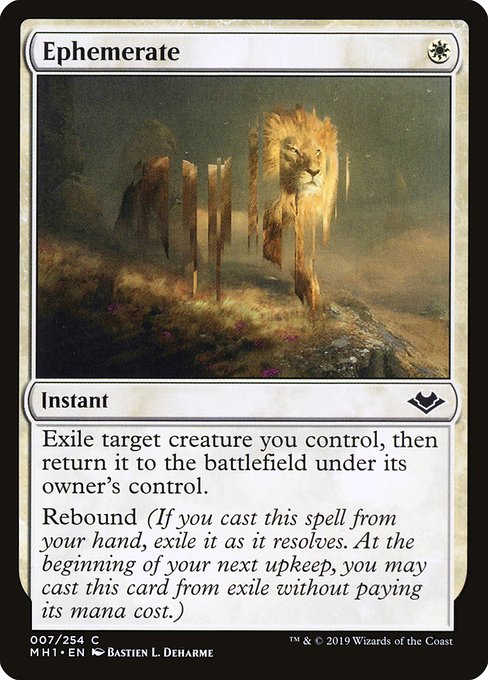
Ephemerate is the quality of card which gets better the lower power the environment. Blink as an archetype in “Traditional Unpowered” cubes (whatever that means) boils down to a midrange deck whose fail state is drawing the wrong mix of creatures, blink spells, and interaction. Ephemerate doesn’t move the power level needle here. I’ve had success with it only when everyone’s trying to outgrind each other and the removal is scarce, slow, or of poor quality. I don’t think this is a powerful card, but it has a home.

“Stepmom” probably doesn’t need much convincing, but is very much worth a tip of the hat. Similar to the original, viciously oppressive Mother of Runes, Giver of Runes loses the ability to protect themself in exchange for granting protection from Colorless sources. This card is a staple in any 360, and it should be going forward.
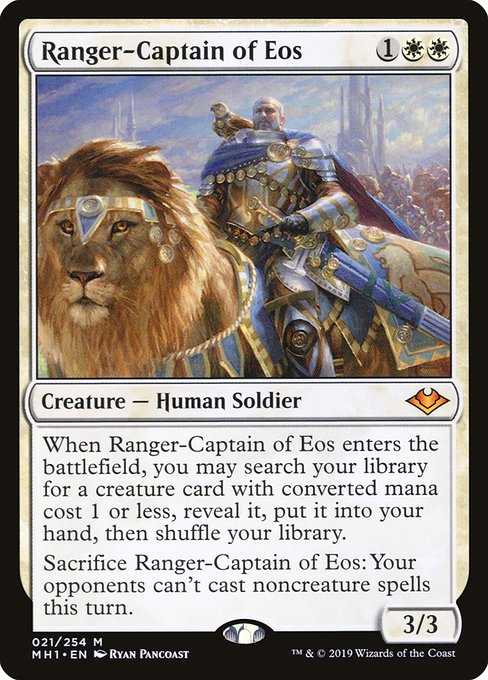
I wasn’t on Ranger-Captain of Eos at first, as I was stuck on my love for Ranger of Eos for a long time. However, as it regularly turns out in Magic, more cheaper is more gooder. Three mana is a lot less than four in my aggressive white decks, and the body is big enough to outsize the other aggressive decks and rumble with beefy Green creatures.
The sacrifice ability on Ranger comes up against Control decks, where it can lock the opponent out of casting a sweeper or planeswalker during a key turn cycle. I’m continually impressed by this card’s ability to maintain an advantage, recover after a sweeper, or to simply play as Mulldrifter. This is a worthy three drop for any 360.
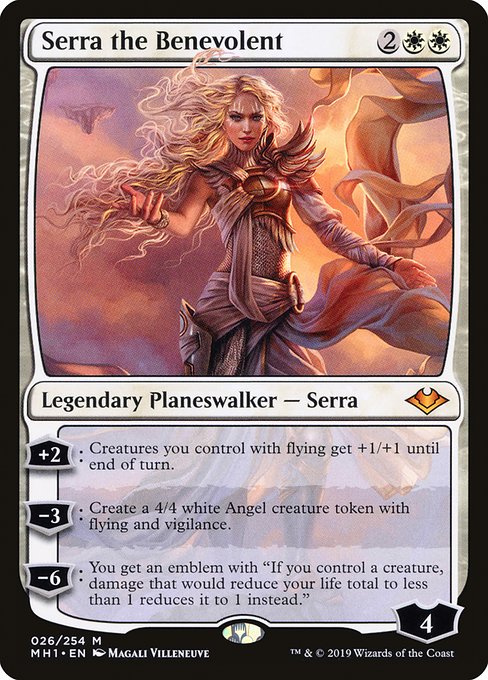
Surprisingly I was, for a time, talked out of testing Serra the Benevolent for being too powerful. Serra’s ultimate has been the center of several discussions among my playgroup this year. Her emblem is Worship, which as it turns out is utterly unfair in a creature matchup. It is not, however, unfair across all matchups. While we know white is long on four-drop planeswalkers, Serra the Benevolent might be one of the best.
As I mentioned earlier, planeswalkers are great at ending the game if left unchecked, and that’s a feature, not a bug. Serra is a cheaper take on Sarkhan the Masterless, but with a much different end-game in mind. Her plus ability doesn’t require fliers, but it’s nice when she does. It’s more a march to the ultimate, while conveniently upping the clock with your Serra Angel token.
I’m most interested in Serra the Benevolent as top end for aggro or a midrange threat than a control card. And for that, she has been excellent. I wouldn’t go so far as to call her a staple, but she might end up being one given enough time. Why anyone bothers to play Baneslayer Angel anymore when we have Serra, I don’t know. More cheaper more gooder.
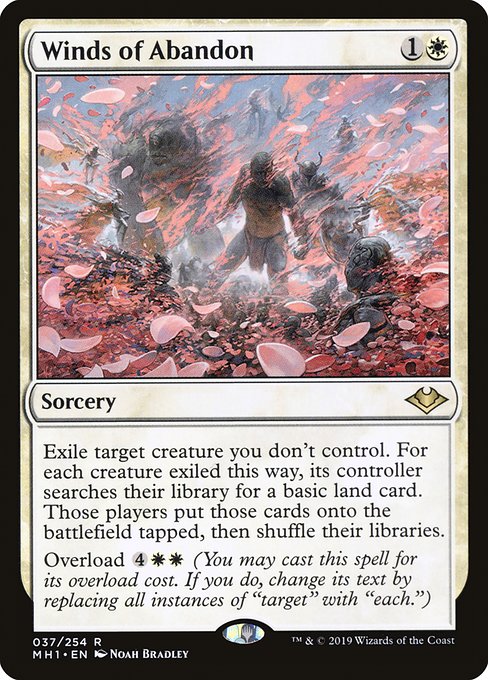
If you don’t mind the occasional blowout that kicking Winds of Abandon is sure to provide, this is a satisfying removal spell for any deck that can cast it. All the downside of an early Path to Exile remains—and yes, it is a downside—but a one-sided sweeper is powerful enough that I’m happy to run Winds whenever I’m able to.
Blue
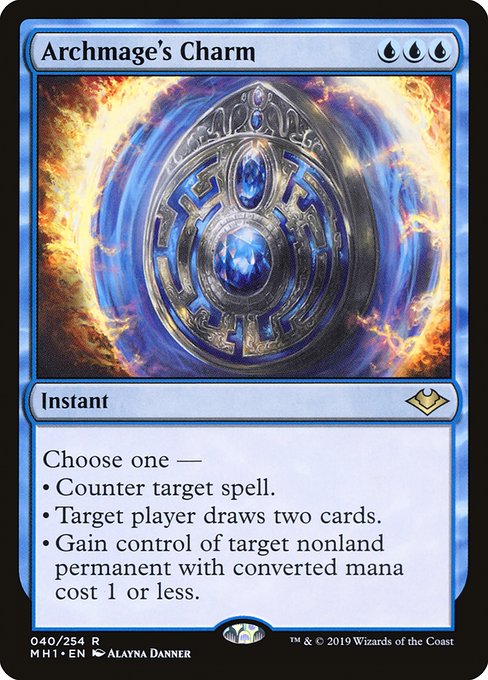
I had believed Archmage’s Charm was give too prohibitive a mana cost to be viable, but I was soon reminded that most “Traditional Unpowered” cubes run Cryptic Command without so much as batting an eye. I discovered on my first trial run with the card that, so long as you can reliably cast it, Archmage’s Charm is never a dead draw. It remains a bit of a challenge for my Azorius control deck, but my testing was predicated on seeding Archmage’s Charm as a parasitic card for blue control. And like Cryptic Command, it is a good payoff—both for having a functional mana base, and for committing to hard control.
The baby Mind Control mode does good work against every opponent, which came as a shock to me. Stealing either one drops or tokens at instant speed is something I’m sure will continue to come up with further testing. I look forward to being impressed by this card’s flexibility, and encourage you to modify your blue countermagic for its inclusion.

None of you need to be told that free is a premium price to pay for any spell. Force of Negation, a “fixed” Force of Will variant, still shines with its restriction. I don’t run free spells in my cube, but in any unfair environment this card is a slam dunk in your 360.

I enjoy a good cantrip as much as any blue mage and had believed Scour all Possibilities to be a slam dunk. After testing it became clear being Sorcery speed was too big a cost to pay. My blue decks want to hold up countermagic as early as turn two, as there’s often enough pressure to require a sweeper by turn four. Ergo, my cube is too fast for these slower cantrips, but for midrange cubes Scour should be an excellent play at any point in the game. If you aren’t sold on increasing the raw number of cantrips in your blue section yet, do yourself a favor and try it. Your players will thank you.
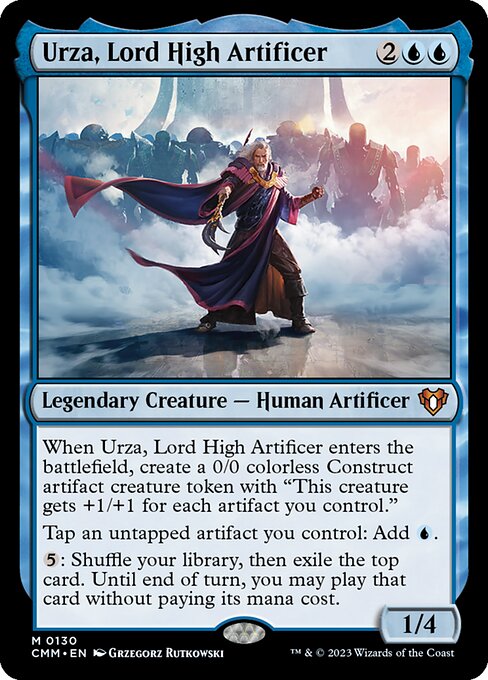
One of the more hotly debated cube inclusions of the year, Urza, Lord High Artificer has been called everything from “an archetype unto himself” to “unplayable garbage.” Where you land on Urza depends on the level of nonsense you allow in your environment. Urza has very little inherent raw power, but pairs well with other, more polarizing cards—like Winter Orb! (sigh) If you do manage to assemble the contraption, as it were, he can do some cute stuff.
Urza requires heavy support; archetypes that seek to generate large amounts of mana, or a cube built entirely around artifacts and artifact synergies. Otherwise he’s just a slow, durdle engine of a creature. I’d rather cast a planeswalker, Supreme Verdict, or even Whirler Rogue at four in my cube. For those who love the Magic Online-style cubes, Urza has a home in Vintage Cube alongside a tight but inconsistent blend of busted artifact mana.
Build arounds as potentially powerful but undeniably narrow as Urza are hard to, well, build around. The number of times you actually draw Urza during the draft matters, and too often the Rube Goldberg board states are easy to break up with even the most trivial of disruption.

Rarity-restricted environments will look to Watcher of Tomorrow as a cheap bit of value. That it comes into play tapped is a big cost, so it plays in the same formats where Ephemerate gets its money. That said, it’s a terrible blocker or topdeck, and plays against what blue generally wants to do.
Black
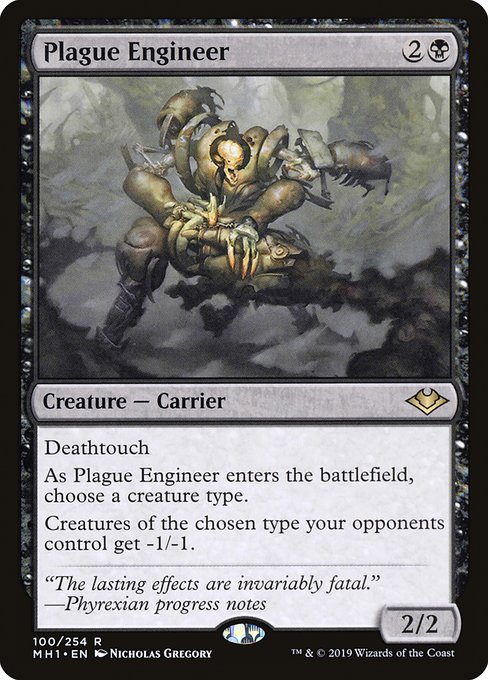
The more I play with Plague Engineer, the more I wonder why it took me so long to include it in my list. It’s almost always Mulldrifter, except perhaps against controlling blue decks. But against any creature deck it’s eminently playable, which belies the ostensibly restrictive tribal nature of its ETB. Three mana is an excellent rate for this effect, and the body it leaves behind is ready to trade off. It’s a deceptive little card, one that’ll surprise you with it’s power. Do give it a try.

This little stinky goblin is the Blaggro version of Safehold Elite. Both are fine aggressive cards, so if you’re looking for critical mass support this card has been very playable. Someone will undoubtedly yell at me for not mentioning how Putrid Goblin helps enable persist combos; and while I will acknowledge this is a thing people aim to support in their cubes, I don’t consider it much more than an inconsistent midrange gameplan.

I first ran this as a black Strategic Planning, but it’s closer to a reanimator card than cheap card selection. Run this when black can leverage the graveyard, and it’ll feel close to absurd in the right builds.
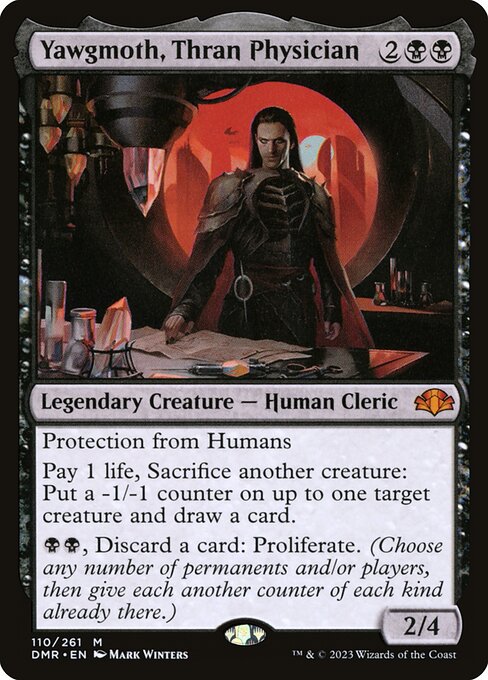
Yawgmoth, Thran Physician is very similar to Urza: they’re both four mana Baneslayers that can do some cute stuff if they stick, but have almost zero immediate impact—actual zero if we’re talking about Yawgmoth—and in 2020 that’s just not good enough anymore. The one upside I’ve found is he’s a zero mana sacrifice outlet, which will undoubtedly find its place in a midrange cube. It’s not free, but zero mana is zero mana, and that’s worth something I guess.
I’m not denying Yawmoth’s potential, but much like Urza I think it takes too much to make something meaningful work. The other black four drops we have access to now are much, much better on average than whatever Yawgmoth can promise to do.
Next week we’ll finish revisiting Modern Horizons with the red, green, multicolor, and colorless cards, including the one Snow card worthy of independent consideration.

